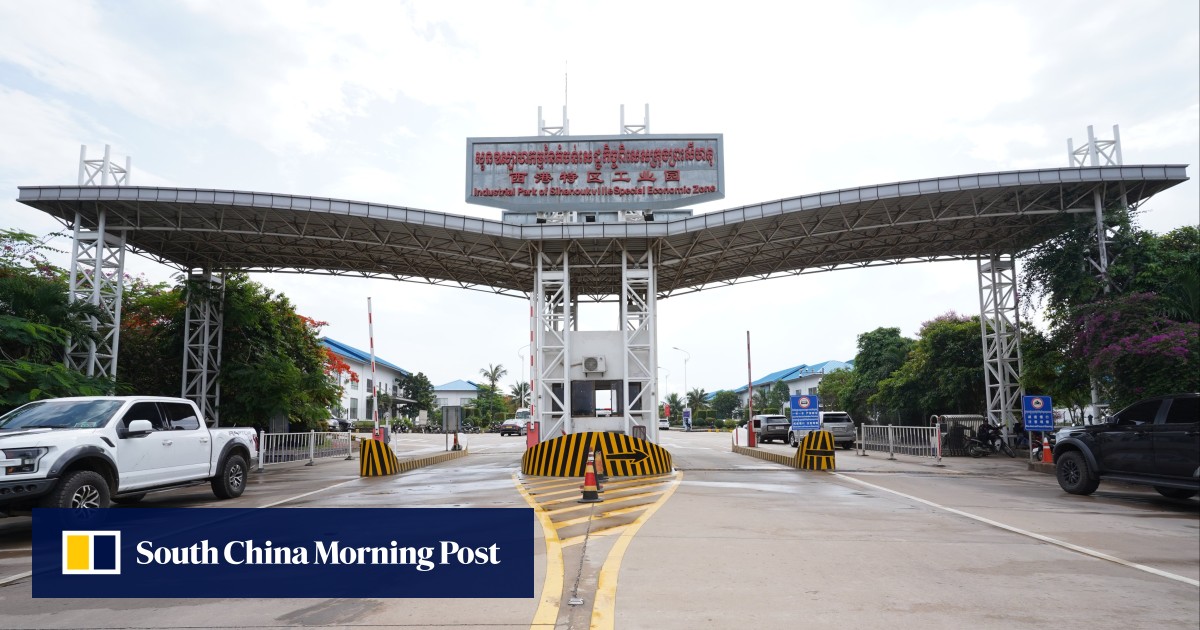beijingwalker
ELITE MEMBER

- Joined
- Nov 4, 2011
- Messages
- 65,195
- Reaction score
- -55
- Country
- Location
China tops development finance in Southeast Asia, faces more competition for regional influence: report
- China provided less infrastructure investment in 2020 and 2021 amid the pandemic and as many projects, like those in its Belt and Road Initiative, did not deliver
- While China has out-signed traditional donors in terms of investment value, partners like the US, Europe, Japan typically do better with actual delivery
Published: 9:24pm, 4 Jun, 2023
The East Coast Rail Link in Malaysia is a major infrastructure project under the Belt and Road Initiative.
China has been Southeast Asia’s largest development partner and its biggest source of official development finance but faces increasing competition from other financiers, according to a new report by the Lowy Institute.
Infrastructure funding accounted for the majority of development finance but China’s contribution in this aspect slowed in 2020 and 2021 when many projects, including those in the Belt and Road Initiative, did not deliver and the pandemic reduced China’s funding to Southeast Asia.
Between 2015 and 2021, China disbursed about US$5 billion a year in development finance to Southeast Asia, with infrastructure development accounting for about 75 per cent. Infrastructure typically includes projects in transport and storage, energy, communications, and water and sanitation.
Transparency in aid going to regions like Southeast Asia is increasingly important amid geopolitical competition for influence, the report said.
“Intensifying geostrategic tensions between China and Western governments have also seen a growing focus on using development finance, particularly in infrastructure, as a means of competing for influence,” Lowy Institute’s Indo-Pacific Development Centre director Roland Rajah said.
“This makes an understanding of the scale and contours of official developmental finance in Southeast Asia of critical interest to governments in the region and their development partners.”
This was particularly so as, despite Southeast Asia’s growing economic progress, the region still “faced a large unmet financing needs, notably for infrastructure, human development, and responding to climate change”, the report said.
“This means development cooperation financed by various forms of official development finance – grants, loans, and other forms of assistance – has a critical role to play.”
As an example, in Indonesia, whose economy is worth US$1.3 trillion and is the largest economy in the region, development financing contributions from other countries still account for over 10 per cent of total government spending.
Even wealthier Southeast Asian countries such as Malaysia and Thailand receive substantial development finance aid, particularly from China.
China, unlike traditional development partners such as Japan, Europe, and South Korea, have funded countries like Malaysia and Thailand with projects such as the East Coast Rail Link project and the Thailand-China High Speed Rail project, respectively, despite their status as “higher income countries in the region”, the report said.
Other countries that receive development aid from China are its neighbours Laos and Cambodia.
“As China’s power has grown, Beijing has been advocating for a restructuring of the global governance system to better align with its interests and values,” the Lowy report said.
“As part of this effort, China launched several large-scale initiatives, such as the Belt and Road Initiative … its aim is to position the country as a provider of global public goods, by offering Chinese resources and solutions to tackle development challenges.”
After China, traditional multilateral financiers such as the Asian Development Bank and the World Bank are the second and third biggest providers of development finance to the region and are pitting against China to be the go-to financiers for the region.
China also faces competition from Japan, South Korea, and Europe in infrastructure development financing while the United States and Australia are smaller competitors in this aspect of aid.
While China has out-signed the traditional donors, these traditional partners typically do better with actual delivery, the report said.
After China, the Islamic Development Bank is the next most influential non-traditional development financier to the region, providing about US$225 million a year to the region.
Most of it goes to Indonesia in the form of non-concessional loans focused on agriculture and education.
Saudi Arabia is shaping up as the region’s largest bilateral Middle Eastern development partner, providing about US$45 million a year mostly for scholarships.
India, also a non-traditional aid provider, is also a rising bilateral partner providing about US$70 million a year in development finance to the region.
Myanmar receives almost 90 per cent of this funding for transport and energy projects.
In the region, it is not the richest countries that do the heavy lifting when it comes to providing aid in development finance, the report said.
“Cambodia and East Timor are among the poorest economies of Southeast Asia … when looking at the ratio of development finance provided to finance received, East-Timor is the second-most generous Southeast Asian partner, while Cambodia is the fourth,” the report said.
Cambodia provides humanitarian support to the region while East Timor has provided emergency assistance to its Asean neighbours.
Singapore and Brunei, Southeast Asia’s two wealthy countries, underperformed, contributing only 2.6 per cent of intra regional development finance, the report said.

China tops development finance in Southeast Asia: report
China provided less infrastructure investment in 2020 and 2021 amid the pandemic and as many projects, like those in its Belt and Road Initiative, did not deliver.
